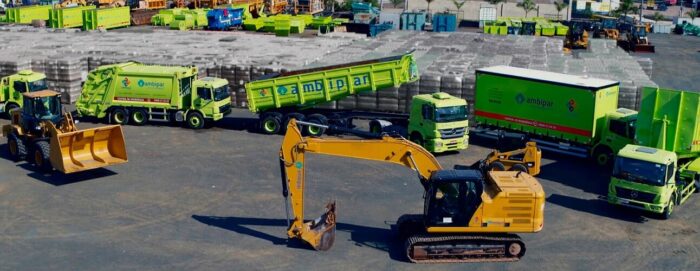Understand how the National Solid Waste Policy (PNRS) fostered environmental development.

By Equipo de Redacción
Posted in December 8, 2020

The National Policy on Solid Waste (PNRS) was instituted by Law No. 12,305, of August 2, 2010. The legislation established goals and objectives for individuals and companies related to waste management, with the following purposes: adjusting waste management to existing laws and regulations, environmental preservation by reducing the use of landfills and the reverse logistics of post-consumer waste.
Considered a milestone in Brazilian environmental legislation for defining responsibility for the management of solid waste, the PNRS was in process for 20 years and established goals, such as ending the disposal of waste in dumps by 2014, which ended up being extended to 2023. However, even in 2020, the goal was not achieved in several locations.
With ESG (Environmental, Social, Governance) on the rise in business, companies are more concerned with waste management and the circular economy. After all, these actions directly impact the image of companies, causing the value of the shares to increase or decrease. Investors are keeping an eye on corporations that invest in sustainability and meeting the PNRS is one of the main requirements for taking care of reputation and raising stocks.
PNRS obliges companies to carry out the correct management of waste, covering all its stages. We enumerate the five main objectives of the PNRS so that you understand how this law fostered environmental development:
- 1. Protection of public health
Waste management is also a way of taking care of public health, after all, waste can cause a number of diseases. The dumps contaminate the soil and water, causing health problems for the population that, eventually, has contact with some virus, bacteria or toxic substance. In addition, they also emit greenhouse gases, which cause climate change.
According to the scientific article “Urban Solid Waste: socio-environmental impacts and the perspective of sustainable management with social inclusion” by Nelson Gouveia, from the preventive medicine department at the University of São Paulo (USP), there are several environmental impacts generated from the disposal of solid waste that pose worrisome risks to human health.
Contaminated soil and air release high levels of organic compounds and heavy metals in communities that are close to waste disposal sites. People living in these regions have high levels of these compounds in their blood, which can cause cancer, abnormalities and harm newborn children.
The National Policy on Solid Waste determines that the public and private sectors carry out waste management to prevent these materials from being sent incorrectly to landfills. With the support of research, development and innovation from companies specialized in waste management, the energy capacity of the materials can be calculated, allowing for example the targeting for more noble treatment systems. In this way, it is possible to avoid disposal in landfills and promote the circular economy.
- 2. To reduce, to reuse and to recycle
Decreasing the amount of waste generated is a goal of the PNRS and an objective to be achieved by each waste generator. The internal reuse of waste is a reality and there are already companies that establish this practice as one of the ways of complying with the policy, since there are the quantitative and mandatory goals to be stipulated in their solid waste management plan. In the case of materials that cannot return to the production chain, companies must carry out the environmentally correct destination, making it possible to value this process, observing the valuation characteristics of each type of waste.
Reducing the amount of materials in landfills and promoting conditions that make it possible to return to industries as raw material is one of the premises of PNRS, reducing environmental impacts and pollution risks and promoting the circular economy.
- 3. Encouraging the adoption of sustainable production and consumption patterns
The National Solid Waste Policy was another source of incentive for waste generators to practice sustainability in all their processes. Some companies have started to look at the matter more carefully, measuring the ability to highlight their brand by investing in actions that promote the circular economy.
- 4. Development and improvement of clean technologies
Another PNRS objective that is worth highlighting is the development of clean technologies to minimize environmental impacts. Today, there are research centers specialized in development and innovation, capable of studying waste and its characteristics, developing sustainable technologies to promote the circular economy.
Often, companies lack the expertise and know-how to decide what to do with the waste generated. For this reason, researchers and specialist scientists are hired to develop new materials, aiming to reintroduce the company’s waste into the production chain.
- 5. Encouraging the recycling industry
Another point worth mentioning is the incentive to the recycling industry to encourage the use of raw materials and inputs from materials that have been recycled. In doing so, the company starts to spend less with the purchase of raw materials. In addition, you can create a new production line and promote the market with a sustainable product. Thus, the company takes care of the environment, complies with the National Solid Waste Policy and builds its own image before society, showing that it is a sustainable company concerned with the environment.
Ambipar is a Brazilian multinational leader in environmental management. It has expertise in reverse logistics to meet the new demands of the pharmaceutical industry. In addition, it recently acquired two legal and environmental compliance software companies focused on artificial intelligence that assist with waste documentation and traceability. In addition, it has about 36 monitoring cameras to monitor the process, ensuring 100% traceability.


